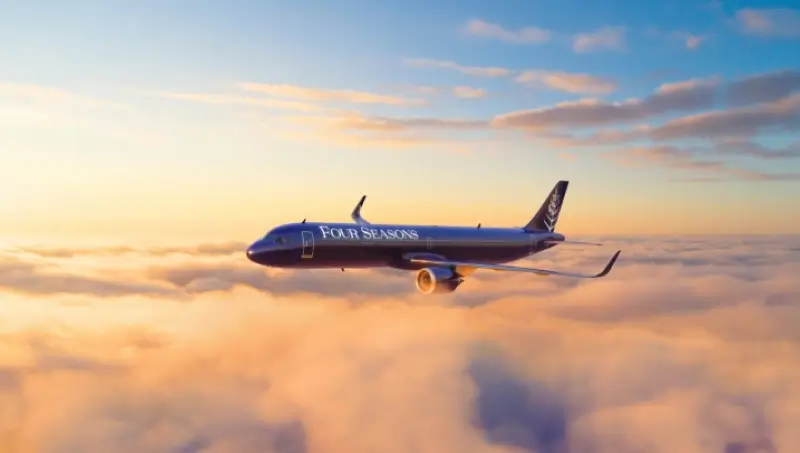
Over 29,000 new aircraft required in the next 20 years
Sep 24, 2013

The aviation industry is facing a significant demand for new aircraft, with estimates suggesting that over 29,000 new planes will be needed in the next two decades. This surge is driven by factors such as increasing air travel, fleet modernization, and the need for more fuel-efficient and environmentally friendly aircraft. As airlines expand their routes and replace aging fleets, manufacturers are challenged to meet this demand while also incorporating advanced technologies. The anticipated growth presents opportunities for innovation in design, production, and sustainability, shaping the future of air travel and the global economy.
The aviation industry is on the brink of a significant transformation, with forecasts indicating a requirement for over 29,000 new aircraft in the next 20 years. This surge in demand is driven by several factors, including increasing global air travel, the need for fleet modernization, and the rising emphasis on sustainability. Let’s delve deeper into the implications of this forecast and what it means for stakeholders across the aviation sector.
Factors Driving Aircraft Demand
Several key factors are contributing to the anticipated demand for new aircraft:
- Growing Air Travel: As economies expand and disposable incomes rise, more people are traveling by air than ever before. The International Air Transport Association (IATA) projects that the number of air travelers will reach 8.2 billion by 2037, significantly increasing the demand for new aircraft.
- Fleet Modernization: Many airlines are looking to retire older, less efficient aircraft in favor of newer models that offer better fuel efficiency and lower operational costs. This trend is essential for airlines to remain competitive in a market that increasingly prioritizes sustainability.
- Sustainability Initiatives: With growing awareness of climate change, airlines are under pressure to reduce their carbon footprints. Newer aircraft designs incorporate advanced technologies that help minimize emissions, making them more attractive for airlines committed to sustainability.
The Aircraft Market Landscape
The aircraft market is dominated by a few major manufacturers, primarily Boeing and Airbus. These companies are actively investing in the development of new aircraft models to meet the evolving needs of airlines. In addition, there is a growing presence of regional and niche manufacturers who are capturing market share by offering specialized aircraft suited for particular routes or operational needs.
| Manufacturer | Aircraft Models | Projected Deliveries (Next 20 Years) |
|---|---|---|
| Boeing | 737, 787, 777X | Over 15,000 |
| Airbus | A320, A350, A220 | Over 14,000 |
| Embraer | E-Jet series | 2,500 |
| Bombardier | CRJ series | 1,000 |
Impact on the Aviation Ecosystem
The demand for over 29,000 new aircraft is not just an opportunity for manufacturers; it also has far-reaching implications for the entire aviation ecosystem. Airlines, airports, maintenance organizations, and fuel suppliers will all feel the impact of this surge in demand.
- Airlines: As airlines invest in new aircraft, they will also need to focus on training their crews and maintaining their fleets. This requires a significant investment not only in the aircraft themselves but also in the necessary infrastructure to support them.
- Airports: Increased air traffic will necessitate airport expansions and improvements in facilities. This will lead to more jobs in construction, operations, and customer service, benefiting local economies.
- Maintenance, Repair, and Overhaul (MRO): With more aircraft in operation, the demand for MRO services will also rise. Companies specializing in aircraft maintenance will need to scale their operations to meet the needs of airlines looking to keep their fleets running efficiently.
Challenges Ahead
While the forecast for new aircraft demand is promising, several challenges could impact the realization of this growth:
- Supply Chain Disruptions: The COVID-19 pandemic highlighted vulnerabilities in global supply chains. Manufacturers and airlines must work collaboratively to ensure that critical components are available when needed.
- Environmental Regulations: As governments worldwide implement stricter environmental regulations, airlines may face additional costs associated with compliance. This could influence their purchasing decisions and delay the acquisition of new aircraft.
- Technological Advancements: Rapid advancements in technology can quickly change the landscape of aircraft design and manufacturing. Companies must remain agile and innovative to stay ahead of the competition.
Conclusion
The projection of over 29,000 new aircraft required in the next 20 years presents a unique opportunity for the aviation industry. Stakeholders must embrace the challenges and opportunities presented by this growth to ensure a sustainable and efficient future for air travel. The focus on modern, fuel-efficient aircraft will be crucial as the industry strives to meet increasing demand while addressing environmental concerns.
In summary, the aviation landscape is evolving rapidly, driven by factors such as growing air travel, the need for fleet modernization, and a strong emphasis on sustainability. By understanding these trends and preparing for the challenges ahead, stakeholders can position themselves for success in this dynamic market.
Related Articles

Explore Thailand: The Best Islands to Visit for Paradise, Adventure, and Relaxation

The Ultimate Guide to the Best Islands in Thailand for Your Next Getaway

Do babies need passports? How to get a passport for a newborn

How to get a U.S. passport fast: here’s how to expedite the process

What is Mobile Passport Control: 5 reasons why you should use it

SENTRI vs. Global Entry: A detailed guide

Do you need a passport to go to the Bahamas? Let’s find out

Do you need a passport to go to Mexico? A detailed guide

Do you need a passport to go to Canada? We got the answer

Do You Need a Passport for a Cruise: An Essential Travel Guide

Booster Seat Requirements: All the Rules to Follow in Your Rental Car

What Are the World’s Most Powerful Passports, and How Does Yours Rank?

How to Take a Passport Photo at Home: A Helpful Guide

You've got to have heart! Southwest's new livery

Your opinion: Should water be free on low cost carriers?

Young women bolder than guys as solo travellers
